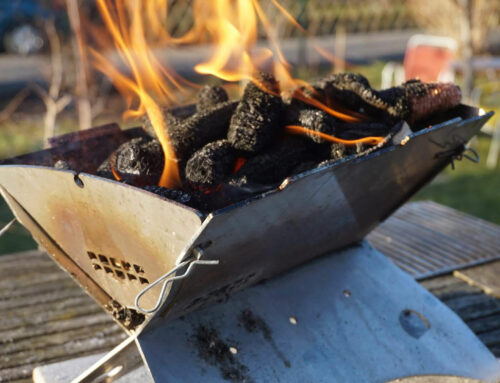We invite you to our barbecue evening: on the grate are 1 kg of beef from Argentina, 1 kg of chicken legs from the supermarket and a few Nuremberg sausages from the supermarket. A few slices of grilled cheese and tofu and also vegetables. We throw all of this on a disposable grill that is bought at the tank, no in the crowd, several at once. Costs nothing. We heat them properly with cheap, smoking charcoal. And when it comes to a pallet of canned beer, the mood is really high, so that we accidentally forget the garbage that remains on the bank.
The ecological balance of such a barbecue experience is impressive. According to the CO2 balance, the emission corresponds to about 50kg or better: a car journey of more than 250 km. (Calculation based on figures from the SERI Institute for Sustainability Research).
It doesn’t have to be. A climate-neutral footprint can also be left when grilling: material, production, construction, the choice of fuel, the food to be grilled and also the handling of waste and other environmental factors are factors that have a positive impact on the climate balance of a grilling experience. We start our grill sustainability series here. It follows: Which material makes sense and is sustainable for a grill








Ad your two cents!